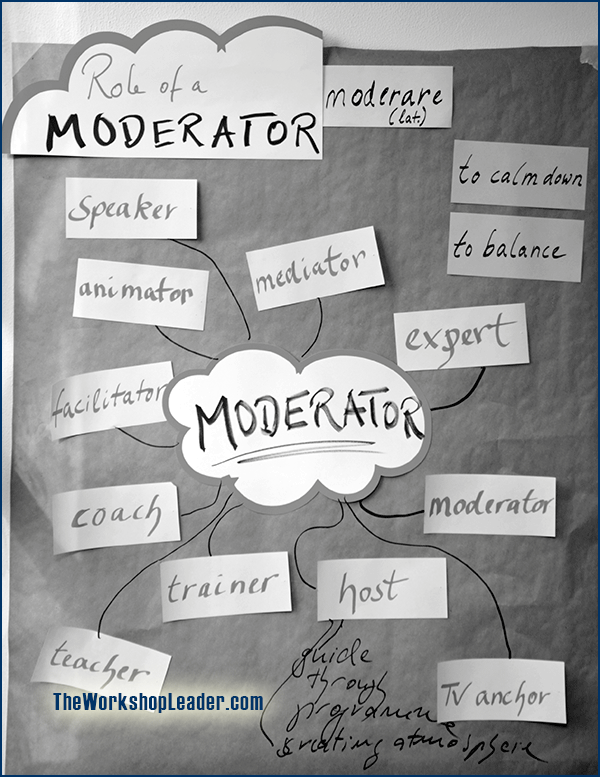I have so many ideas buzzing around in my head. How else could I capture all these mini inspirations,quickly, without the simplicity of Mind Mapping?
Dominic O’Brien (*1957)
nine times World Memory Champion
This is really a gorgeous, multi-purpose tool: Tony Buzan (*1942) developed MindMapping in the 1970s. Though it’s excellent for visualisation, problem-solving as well as learning, you can also use MindMap as group facilitation technique. It allows you to receive input from your participants and structure it immediately in front of their eyes. Thus, it’s also useful as a brainstorming technique. Participants are always proud when their input is valued and marked on the board.
What is a MindMap
The basic idea is to have a central idea, topic or question. From there main branches develop, i.e. topics or ideas. Each of the main branches divides itself into subtopics.
Normally, three levels are enough, But you could go even further if you want. The use of different colours for each level is highly recommended. The main branches should be thicker to keep the overview. And we suggest in green color according to color coding. Illustration and visualisation are encouraged — this is a creative technique!

Use in group facilitation
When you use MindMap for group facilitation as facilitator, then you set the main topic. Then he asks for constituting parts or important aspects of it. Afterwards you can go deeper and add the subparts.
In case a participant suggests as subpart directly, you can inquire what kind of main topic it is. You write the important aspect first, followed by the initially suggested subpart.
We suggest to use an assistant who is familiar with the technique. This will help you to keep your focus on the group, the content and the process.

